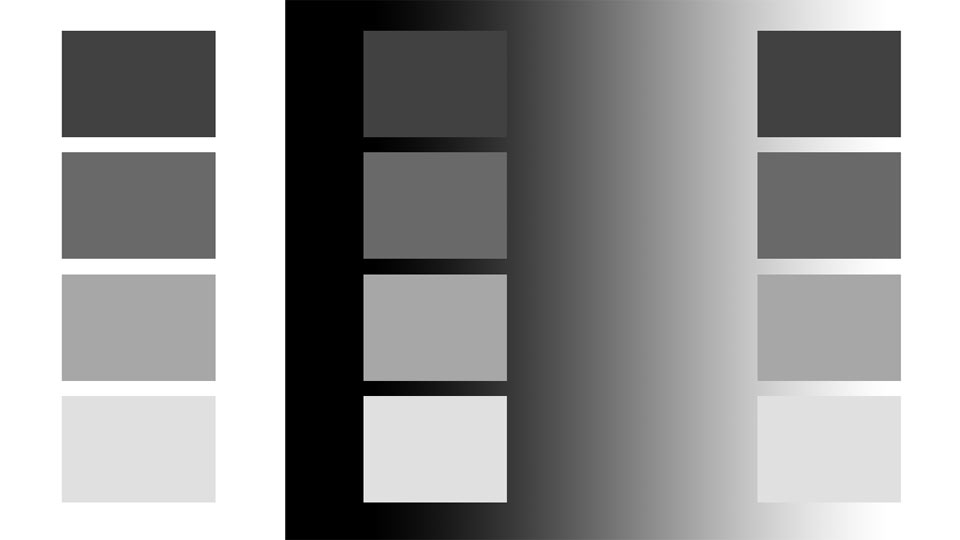A self-study, self-paced course where you can learn how to paint in watercolor by watching video lessons and doing assignments
$297 USD
ENROLL NOWA self-study, self-paced course where you can learn how to paint in watercolor by watching video lessons and doing assignments
$297 USD
ENROLL NOWOne-to-one, unlimited and custom-tailored to your skills and needs Personal Tutoring by the Watercolor Academy teachers
$997 USD
ENROLL NOWVideo lesson by Vladimir London
In this video lesson, you will discover what the simultaneous contrast is, and how to use it in watercolor painting.
The simultaneous contrast is not objective – it is subjective. It is not something that can be photographed.
For any given color, the eye simultaneously requires the complementary color – if this complementary color is not represented, the human brain will generate it.
You have been looking at a yellow screen, with a gray square in the middle, for a while now. Both yellow and gray colors have exactly the same tonal value. Because this is neutral gray, your brain might have persuaded you that this gray has shifted over to violet color, as violet is complementary to yellow.

Here is another example, where the gray square on the red background may appear a bit greenish. This effect will only take place if your device screen has the correct color calibration; if your device displays colors slightly differently, such a perception of color may not happen in your eyes. Also, it takes time for the brain to get used to the picture, and to shift the neutral gray into a chromatic gray.

The complementary color for blue is orange, so the gray square on this picture may appear a bit warmer than for the previous one.

The opposite color to green is red; if your screen shows the correct colors, the neutral gray square in this case may appear reddish to you.

The complementary color to orange is blue, so this gray square may appear colder than the previous one.

Finally, the neutral gray square on the violet background may look a bit yellowish.

The simultaneous contrast works with all colors, not just grays. However, it diminishes when colors have different brilliance.
Let's not take a break from colors, and check how the simultaneous contrast works for grayscale swatches. Here is a selection of four neutral grays with different tonal values. Let's duplicate these swatches, so that we have two identical sets of grays. If we place one set on the dark background, and another on the light, something happens: the range of grays on the left-hand side doesn't look any more identical to the swatches on the right-hand side.

Do you have a feeling that the top box on the left is lighter than another top box? Also, the bottom swatch, on the left-hand side, is lighter than the one on the right-hand side. The difference between light and dark grays, on the dark background, is not as big as on the white background; such visual change of tonal values is called the simultaneous contrast on lightness.
Let's see how applicable it is in real life. For example, here's a white cube; I am placing two gray squares on its top and side planes. The tonal values of these two swatches look very similar. However, if we remove the cube, you will see that one swatch is much lighter than another. Should we take two identical gray swatches with absolutely equal tonal values, and place them on the same cube, their tonal values would not appear equal any more.

Let's have a look at a couple of examples, to see how the simultaneous contrast works in painting...
A self-study, self-paced course where you can learn how to paint in watercolor by watching video lessons and doing assignments
One-time payment - Lifetime membership
$297 USD
One-to-one, unlimited and custom-tailored to your skills and needs Personal Tutoring by the Watercolor Academy teachers
One-time payment - Lifetime membership
$997 USD